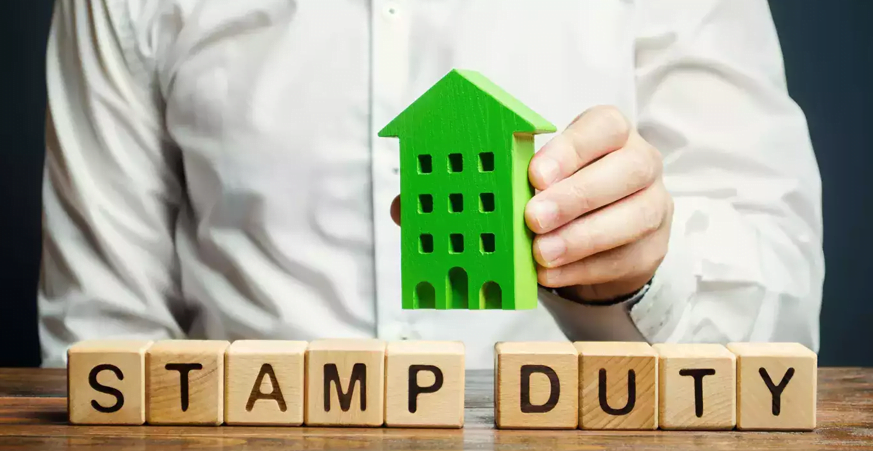Stamp Duty Land Tax (SDLT) is a payment made to HM Revenue & Customs when purchasing property or land in England and Northern Ireland. The amount of SDLT, or whether it needs to be paid at all, depends on the purchase price and the buyer’s circumstances.
Understanding SDLT is essential, as the amount of SDLT can be significant and should be factored into your overall budget.
SDLT Explained
Not everyone is required to pay SDLT. For instance, if you’re a first-time buyer purchasing a home valued under £300,000, you currently don’t have to pay any SDLT. There are additional exemptions we’ll discuss later.
In general, SDLT applies when you:
- Buy a freehold property
- Buy a new or existing leasehold property
- Buy a shared ownership property
- Receive a property in exchange for payment
It doesn’t matter whether you’re using a mortgage, paying in cash, or buying through a shared ownership scheme – SDLT may still apply.
SDLT Tax Rates
Currently, the threshold for residential properties is £125,000, while for non-residential properties like shops and offices, it’s £150,000. The amount of tax payable is calculated as a percentage of the property valuation. Here’s a breakdown of the SDLT tax bands:
- Up to £125,000 = 0%
- The next £125,000 (£125,001 to £250,000) = 2%
- The next £675,000 (£250,001 to £925,000) = 5%
- The next £575,000 (£925,001 to £1.5 million) = 10%
- The remaining amount over £1.5 million = 12%
For example, if you find your dream house priced at £500,000 and you’re not a first-time buyer, the SDLT calculation would be as follows: You pay nothing on the first £125,000, 2% tax on the next £125,000 (£2,500), and 5% on the remaining amount (£12,500). Therefore, your total SDLT would amount to £12,500.
If you’re unsure about the calculations, the simplest way to determine the SDLT payable is by using the HMRC Stamp Duty Land Tax calculator. www.gov.uk
SDLT on Buy-to-Let and Second Homes
We frequently encounter questions about the SDLT payable on second homes or buy-to-let properties. If you purchase an additional property that is not your primary residence, you’ll need to pay a stamp duty surcharge on top of the standard SDLT rates.
The threshold for second homes is £40,000, and the additional property tax rates are as follows:
- Up to £125,000 = 3%
- £125,001 to £250,000 = 5%
- £250,001 to £925,000 = 8%
- £925,001 to £1.5 million = 13%
- Over £1.5 million = 15%
These rates apply whether it’s a buy-to-let property or a second home. You cannot circumvent this surcharge, even if your main home is abroad or if you’re purchasing property through a limited company.
However, there is a small loophole when it comes to stamp duty on granny flats and annexes (separate self-contained dwellings). Although technically considered “second homes,” no surcharges are applied regardless of how they are used, allowing flexibility for renting or other purposes.
SDLT on Shared Ownership Property
Contrary to popular belief, shared ownership properties are not exempt from SDLT, except for first-time buyers. SDLT is applicable to shared ownership properties purchased through recognised shared ownership schemes operated by housing associations and local housing authorities.
The amount of SDLT is calculated as a percentage of the property’s total value. This means that even if you’re buying only a percentage share of the property, SDLT will be applied to the entire value. However, you can later increase your share up to 80% without incurring additional charges.
Reliefs and Exemptions
There are cases where buyers are exempt from paying SDLT. The most common reliefs and exemptions include situations where the property is transferred without payment, such as:
- Property transfer without monetary exchange
- Transfer of property deeds as a gift
- Property inherited through a will
- Transfer of a portion of the home due to separation or divorce
Final Thoughts
Typically, solicitors or agents handle SDLT, so buyers don’t need to worry too much about the process beyond understanding what needs to be paid, if anything. If you’re unsure about your eligibility or the amount of SDLT payable, it’s always best to consult with professionals or utilise the HMRC Stamp Duty Land Tax calculator for accurate information. www.gov.uk
